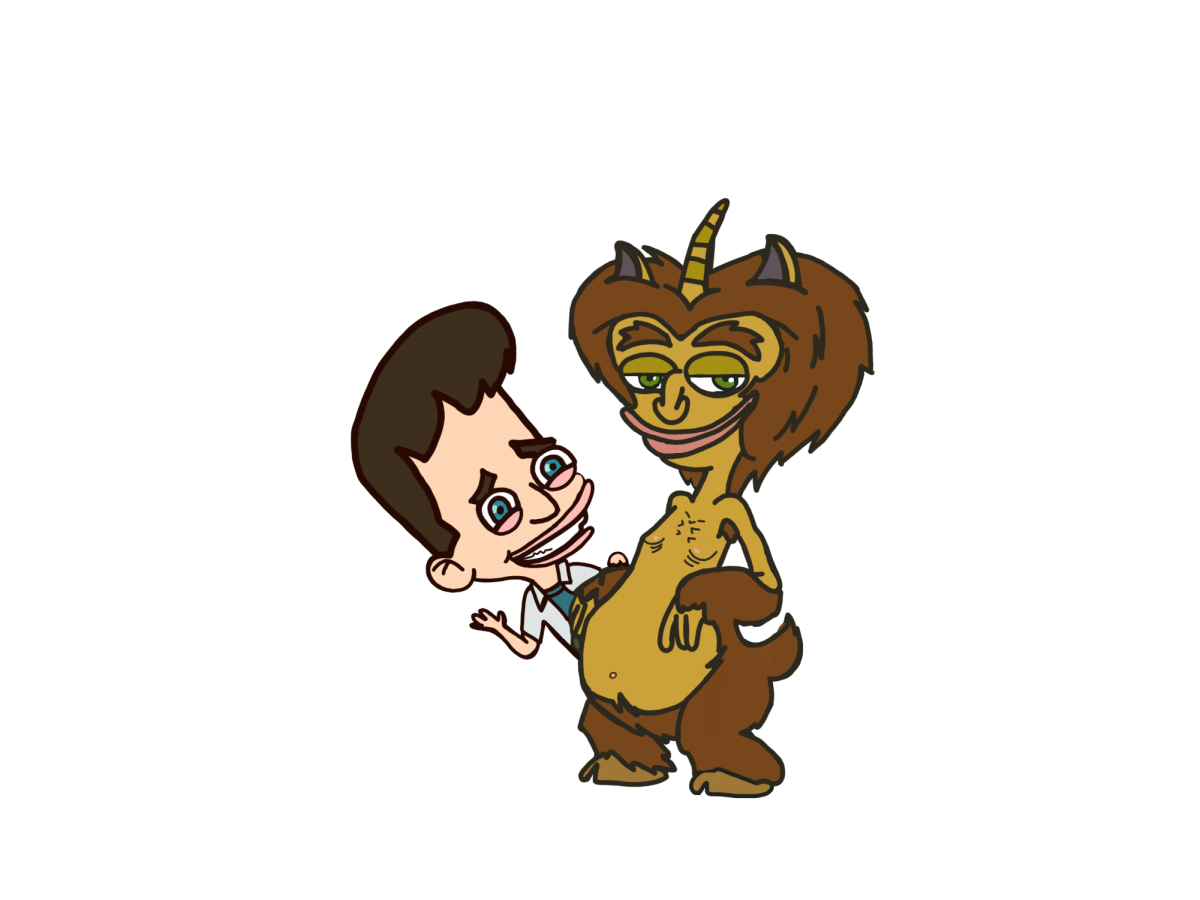“Big Mouth” has been a Netflix hit for years, taking off after its first season in 2017. With its unique cartoon style, fantasy monster characters, and mature humor, “Big Mouth” stood out from the rest and made its way to be nominated for the Emmy Award “Best Animated Show.” While the edgy jokes and unusual plot are the main reason why the show is so famous, there are several bigger important themes that “Big Mouth” tackles to create a funny, yet educational series for viewers.
Several characters in the show are part of the LGBTQ+ community, and are shown going through their daily struggles. This dynamic educates viewers about sexuality and gender identity, and how it plays a role in individuals’ lives.
“I think ‘Big Mouth’ does a great job of LGBTQ+ representation,” freshman Charlotte Searson said. “They have been representing every form of sexuality and gender in a really positive and realistic manner.”
For example, Matthew, a gay man, comes out to everyone he knows except his parents who he fears won’t accept him. His family issues attempt to help viewers understand how sexuality sometimes plays a big role in family acceptance and can put LGBTQ+ members in a vulnerable home situation.
The show also has a full episode dedicated to Planned Parenthood services. Each short story in the episode talks about a different character needing contraceptives, birth control, and other sexual health information. At the end of each short story, every character goes to Planned Parenthood and gets help for their different problems, showcasing the different uses of the facility. This episode is both comical and educational for viewers who may need free sexual health services.
“Big Mouth” also shows the effects divorce can have on teenagers. Jessi, a high-achieving and smart teenage girl, tells a story of a dramatic change in her home life. Her parents were once happily married, until halfway through the school year when her mom and dad started continuously fighting. The tension gives her extreme stress that causes her to lash out, shoplift, try marijuana, and fight with her parents. When they finally divorce and her mom moves away, Jessi gets extremely depressed and struggles to even leave her bedroom.
This aspect of the show helped me with beginning to understand my friends with divorced parents, and how hard of a process that might have been for them.
“Big Mouth” does its best to educate and represent different identity backgrounds. Along with representation in the character’s different daily struggles and lives, the show has fantasy characters representing different emotions and functions in the body.
The Depression Kitty, Hormone Monsters, Logic Rocks, Love Bugs, Anxiety Mosquitos, and Hate Snakes are all examples of the show’s creative way of explaining how humans view the world around them and need to deal with these thoughts and feelings.
These fantasy characters are hilarious and a big reason why the show got popular. The way they explicitly tell the audience what the human characters are going through helps the viewers relate to them more.
“I think the characters give a life to an emotion or mental state that most kids go through,” senior Marc Medio said. “It gives them something to relate to.”
Sexual health, gender identity, and personal life struggles are all tough topics that are difficult to tackle, especially for teenage audiences. Some find the show to be too open about taboo topics. However, “Big Mouth” does an effective job of having these open discussions by diving into the stories of humorous characters that could potentially relate to the audience.


